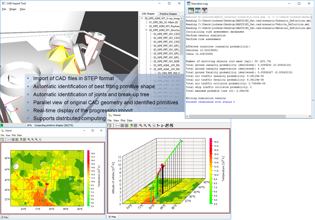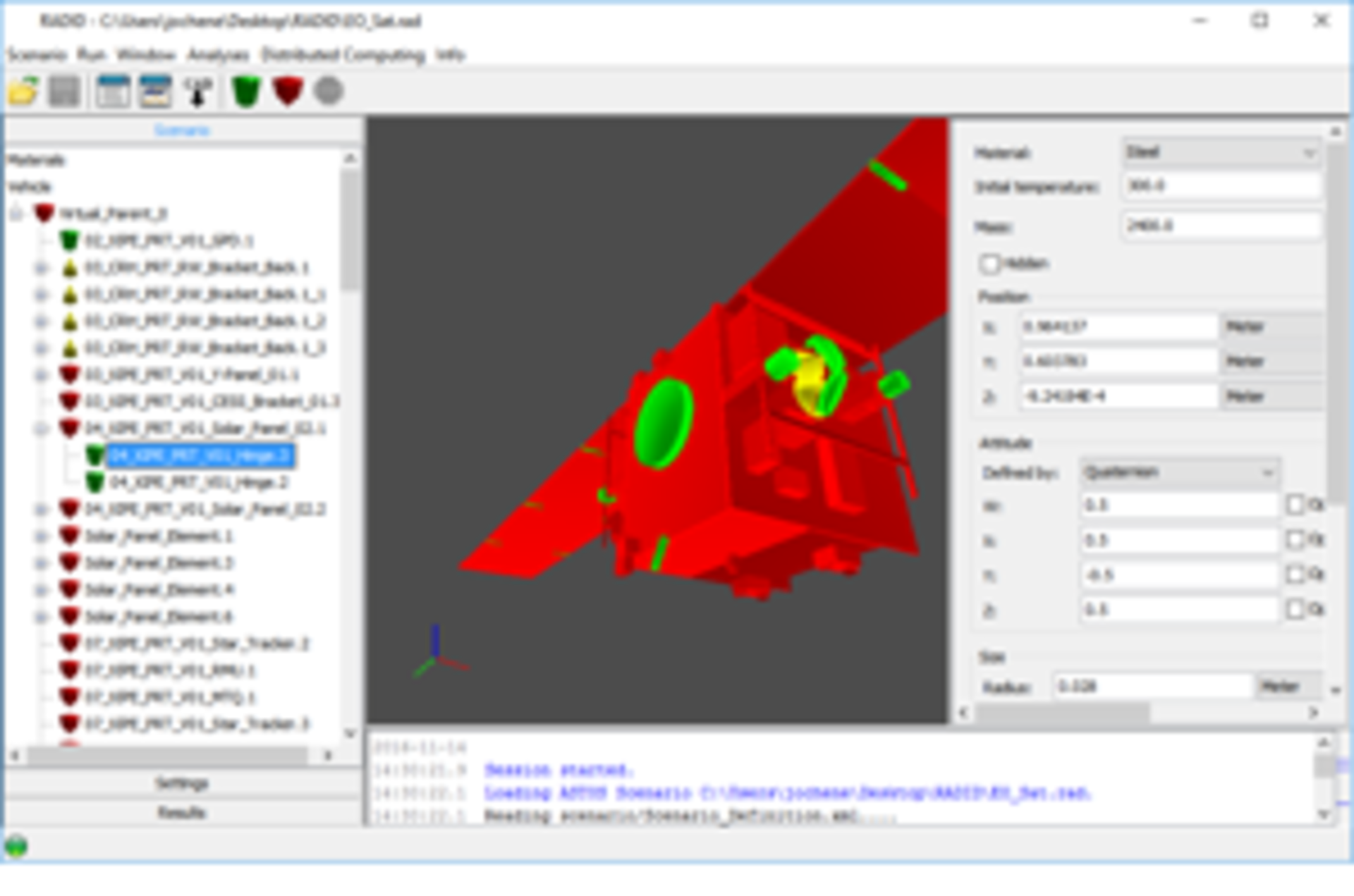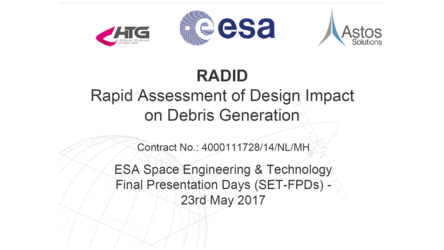RADID – Rapid Assessment of Design Impact on Debris Generation
| Programme: | GSTP | Achieved TRL: | 5 |
| Reference: | G61C—018EC | Closure: | 2016 |
| Contractor(s): | Astos Solutions GmbH (DE), HTG GmbH (DE), Airbus DS GmbH (DE) | ||
Successful design for demise heavily relies on the ability to analyse any spacecraft mission and system design with high fidelity. Already at the start of a project, the systems engineer needs to have the ability to rapidly analyse the impact of certain design choices on the end-of-life disposal, especially on the impact on the risk to humans or assets on ground during a spacecraft end-of-life re-entry in the atmosphere.
Objectives
Enhance current models and upgrade a software framework for the early and rapid assessment of the impact that spacecraft design choices have on the amount and characteristics of debris generated during splash-down of launcher empty stages, spacecraft orbit decay for controlled, as well as uncontrolled, re-entry.

Achievements and status
Upgrade of explosion, fragmentation and ablation modelling algorithms, interfacing with simulation, analysis and optimisation software for orbital and atmospheric vehicle dynamics, including the capability of assessing the mission or system design impacts on risk to humans, ground infrastructure and assets, and maturation of optimisation techniques for D4D worst case identification as well as efficient Monte Carlo simulation within the software framework.
Benefits
Assessment of the impact that design changes have on debris generation at EoL during early project phases and studies with medium-detailed spacecraft models (potential cost saver). A spacecraft can be a satellite as well as an empty launcher stage.
Next steps
Further testing of the RADID software features in single and distributed computing and deployment through application in projects.















 Germany
Germany
 Austria
Austria
 Belgium
Belgium
 Denmark
Denmark
 Spain
Spain
 Estonia
Estonia
 Finland
Finland
 France
France
 Greece
Greece
 Hungary
Hungary
 Ireland
Ireland
 Italy
Italy
 Luxembourg
Luxembourg
 Norway
Norway
 The Netherlands
The Netherlands
 Poland
Poland
 Portugal
Portugal
 Czechia
Czechia
 Romania
Romania
 United Kingdom
United Kingdom
 Slovenia
Slovenia
 Sweden
Sweden
 Switzerland
Switzerland



























